如何手写一个promise函数
Posted 10后程序员劝退师
tags:
篇首语:本文由小常识网(cha138.com)小编为大家整理,主要介绍了如何手写一个promise函数相关的知识,希望对你有一定的参考价值。
const PENDING = \'pending\'
const FULFILLED = \'fulfilled\'
const REJECT = \'rejected\';
class MyPromise
#state = PENDING
#result = undefined
#handler = []
constructor(executor)
const resolve = (data) =>
this.#changeState(FULFILLED, data)
const reject = (err) =>
this.#changeState(REJECT, err)
try
executor(resolve, reject)
catch(err)
reject(err)
#changeState(state, result)
if(this.#state !== PENDING) return
this.#state = state
this.#result = result
this.#run()
// 判断这个callback是不是一个promise
#isPromiseLike(value)
return typeof value === \'object\' && typeof value.then === \'function\'
// return value instanceof MyPromise || value[Symbol.for(\'nodejs.runtime.asm.promise\')] instanceof MyPromise || value[Symbol.for(\'nodejs.runtime.asm.promise.constructor\')] instanceof MyPromise;
// 手动将函数添加到微任务
#runMicroTask(fun)
if (typeof MutationObserver !== \'undefined\')
const textNode = document.createTextNode(\'0\')
const ob = new MutationObserver(fun)
ob.observe(textNode, characterData: true )
textNode.data = \'1\'
else
process.nextTick(fun)
#runCall(callBack, resolve, reject)
// then中的回调需要放在微队列中
this.#runMicroTask(() =>
// console.log(\'www\',callBack, resolve, reject)
if (typeof callBack === "function")
try
const data = callBack(this.#result);
// 判断这个data返回的是不是一个promise
if(this.#isPromiseLike(data))
data.then(resolve, reject)
else resolve(data)
catch
reject(this.#result)
else
const settled = this.#state === FULFILLED ? resolve : reject
settled(this.#result) //链式回调穿透
)
#run()
if (this.#state === PENDING) return
while(this.#handler.length)
const onFulfilled, onRejected, resolve, reject = this.#handler.shift()
if (this.#state === FULFILLED)
this.#runCall(onFulfilled, resolve, reject)
else
this.#runCall(onRejected, resolve, reject)
then(onFulfilled, onRejected)
return new MyPromise((resolve,reject) =>
this.#handler.push(
onFulfilled,
onRejected,
resolve,
reject
)
this.#run() //recursion to avoid stack overflow.
)
、执行:
const p = new MyPromise((resolve,reject) =>
resolve(1)
) //constructor for a promise
p.then((val) =>
console.log(\'data1\',val)
return 123
).then((data) =>
console.log(\'data2\',data)
)
输出:
[Running] node "d:\\console\\utils\\myPromise.js"
data1 1
data2 123
手写promise
手写promise
高阶函数:应用最多的
发布订阅:观察者模式
promise实现原理
常见面试题
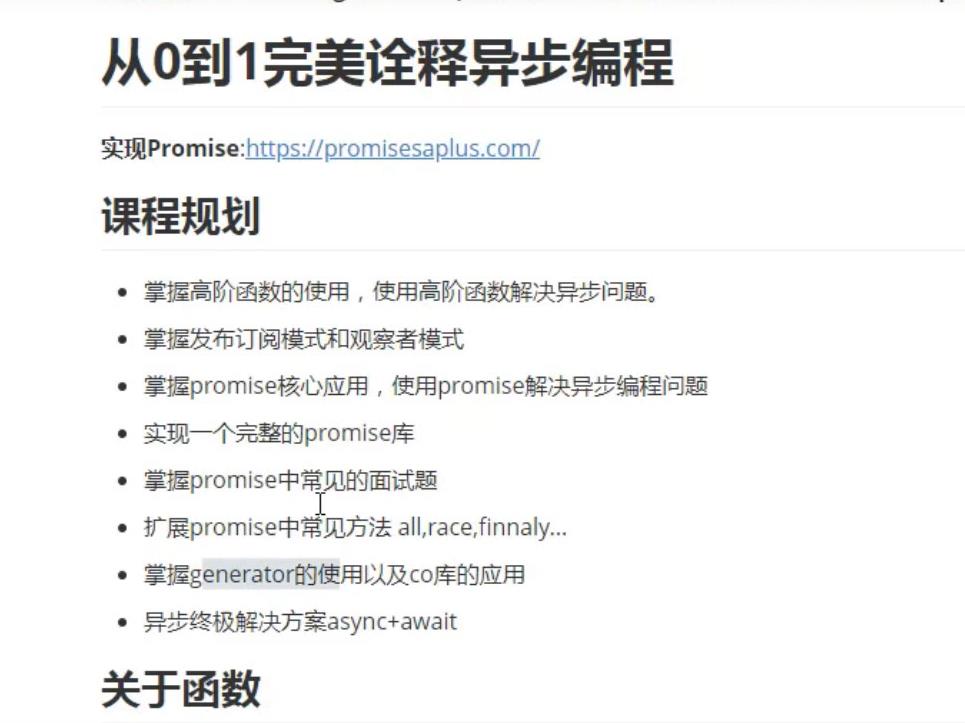
node 11.13 每个版本的事件环 & API 都有区别
高阶函数
函数套函数
如果函数的参数或返回值是一个函数,那我们就把这个函数叫做高阶函数
要写前端,最核心的就是函数
这里有AOP面向切片编程的思想
在原来逻辑之前切了一刀
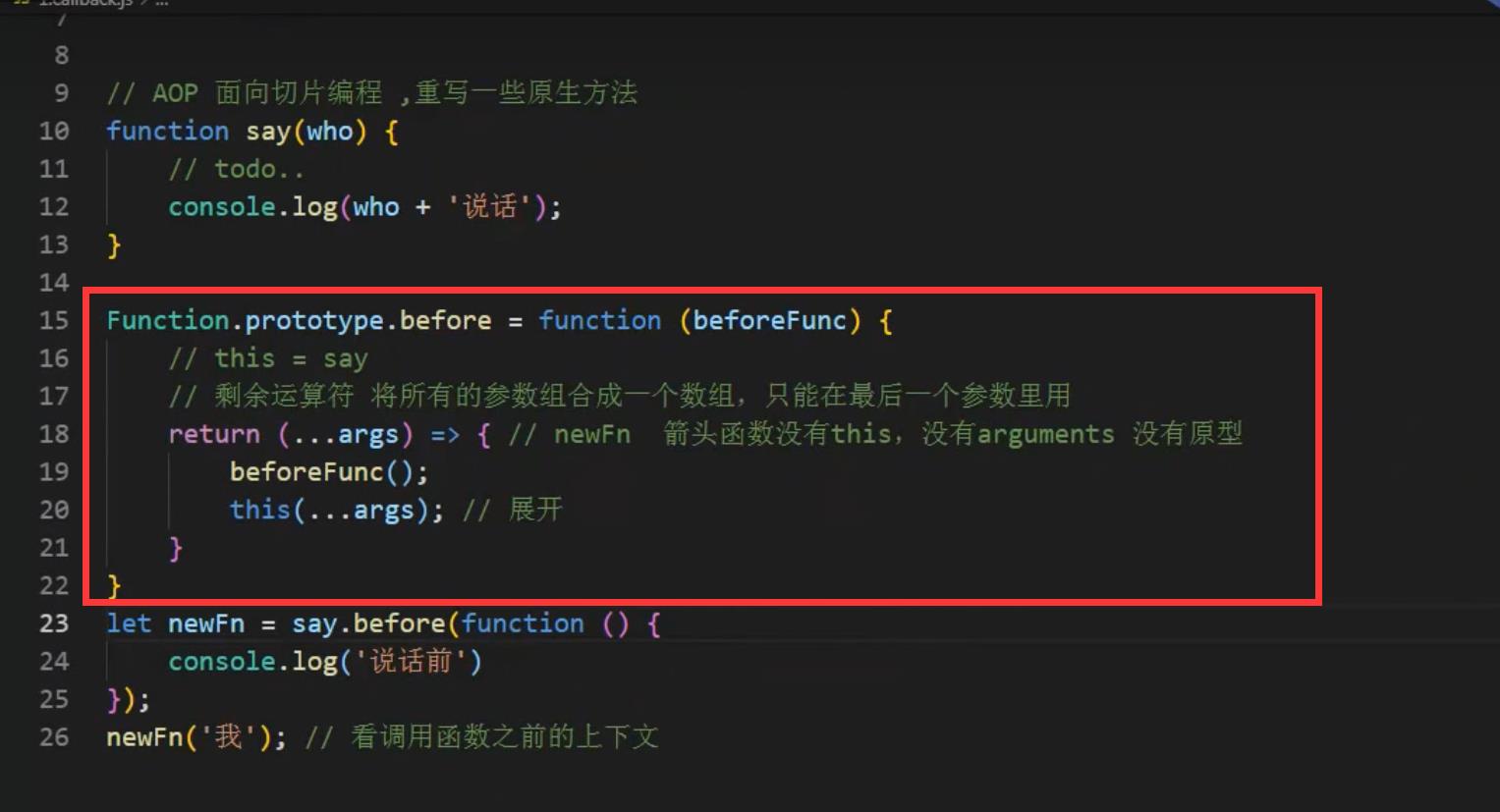
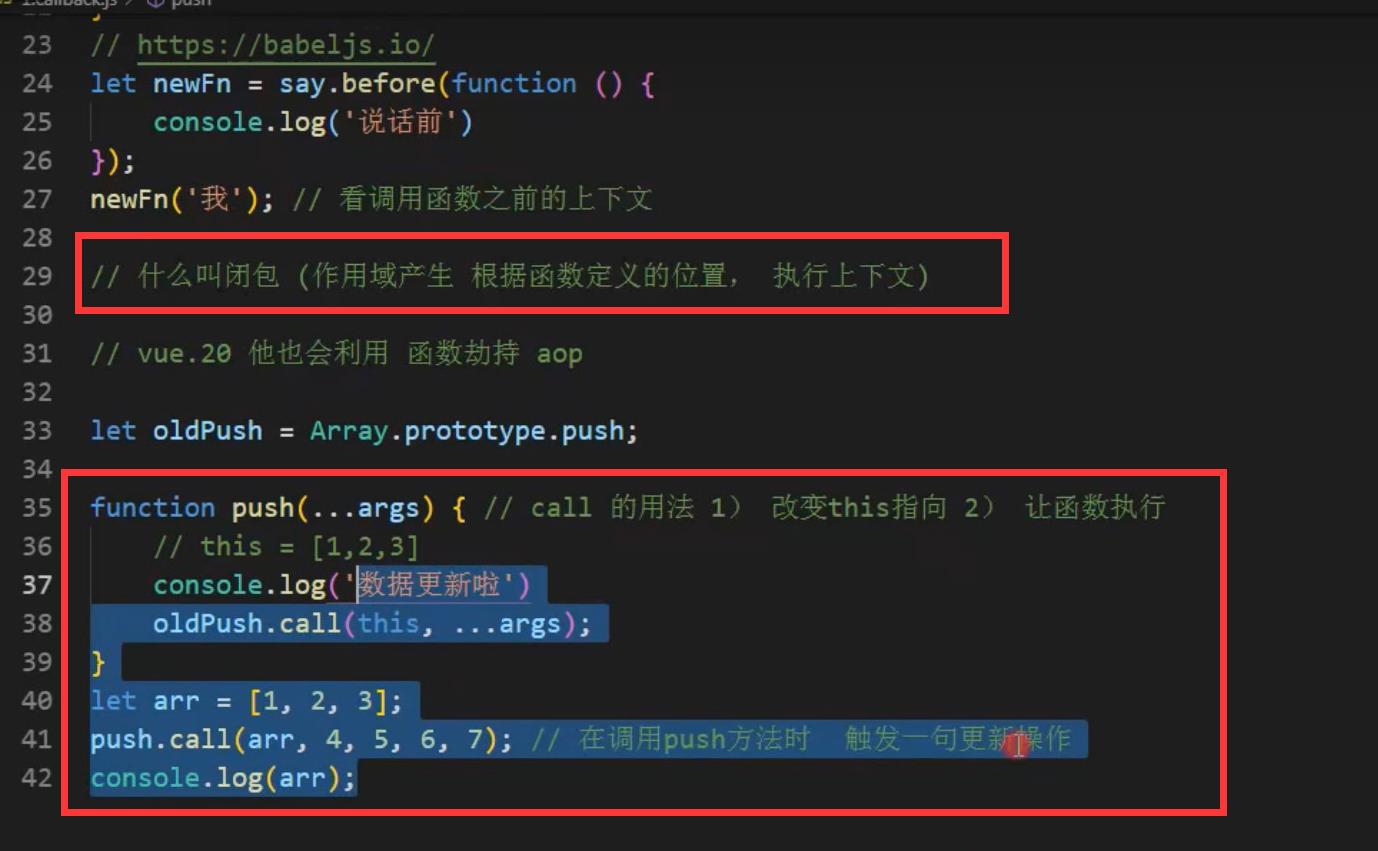
作用域产生是根据函数定义的位置,执行时产生的是执行上下文
作用域是定义的时候就产生的
console.log('promise====================================');
function say(who)
console.log(who+' say hello');
Function.prototype.before=function (fn)
return (...args)=>
fn()
this(...args)
let newFn=say.before(function ()
console.log('say hello before');
)
newFn('Tom')
let oldPush=Array.prototype.push;
Array.prototype.push=function (...args)
console.log('push 触发...')
console.log(this)
oldPush.call(this,...args)
let arr=[1,3,5]
arr.push(7)
console.log(arr,arr)
面向切片编程AOP
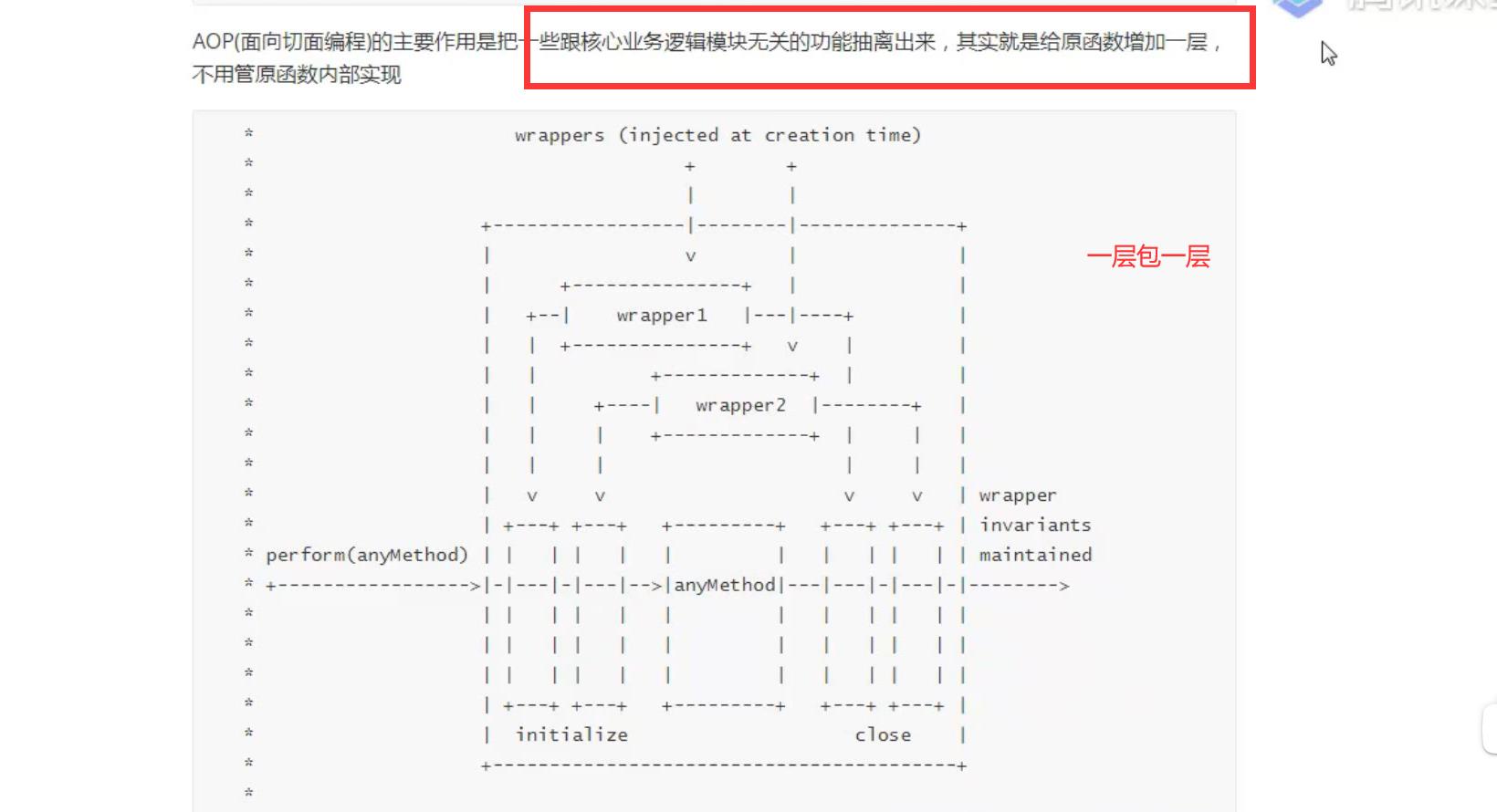
我只关心核心逻辑,需要增强就增强一下就好了
这里涉及到闭包 执行上下文没有被销毁

all.js 本质是闭包原理

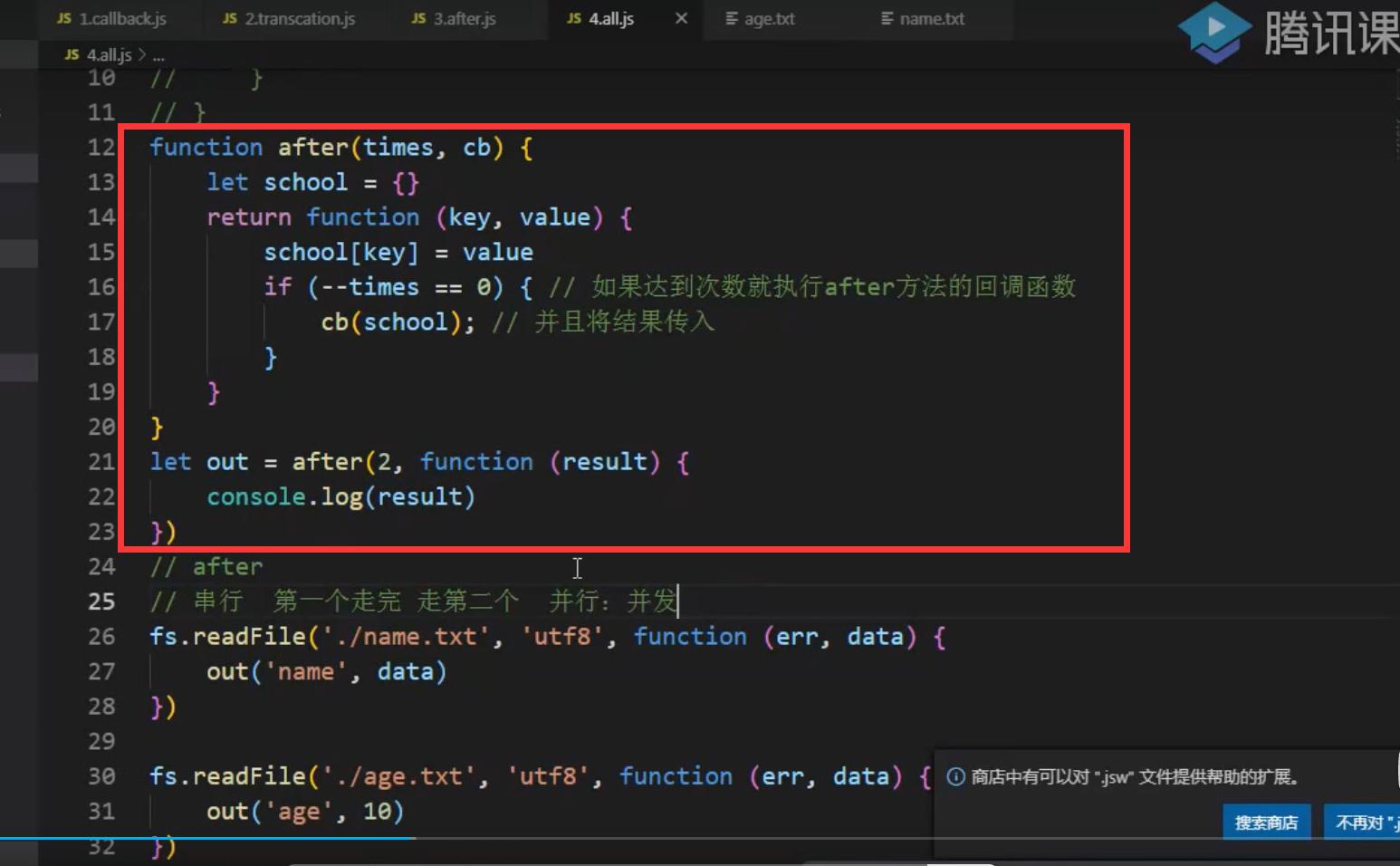
all-on-emit 发布订阅模式
发布订阅模式
核心思路:
订阅的时候把函数存到一个数组里面,然后发布的时候一个一个依次执行。
我先订阅好这件事情,订阅的时候事件是不会立即执行的。
发布订阅模式的特点:发布和订阅是没有关系的,两者是并行的关系
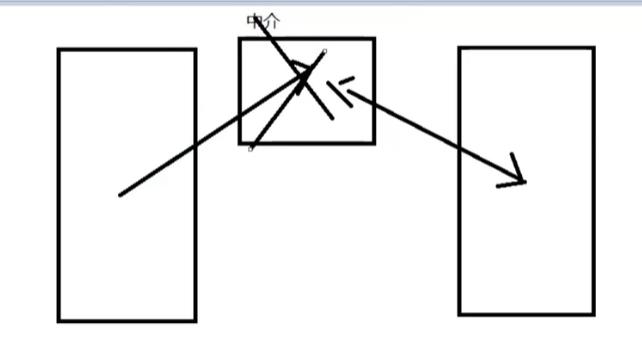
观察者模式
观察者存到被观察者中
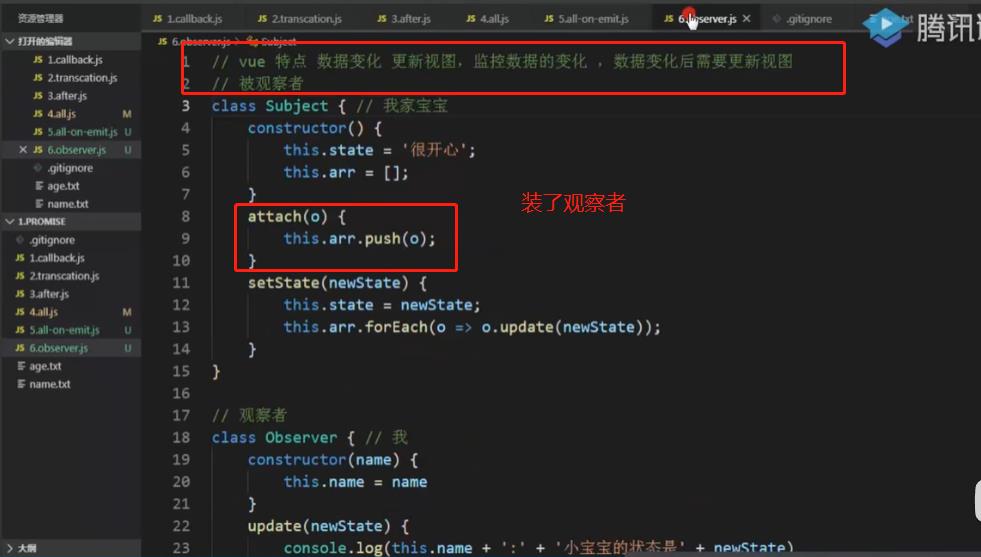
写框架用这个用得比较多,写核心逻辑最多是用发布订阅

Promise*
基础用法
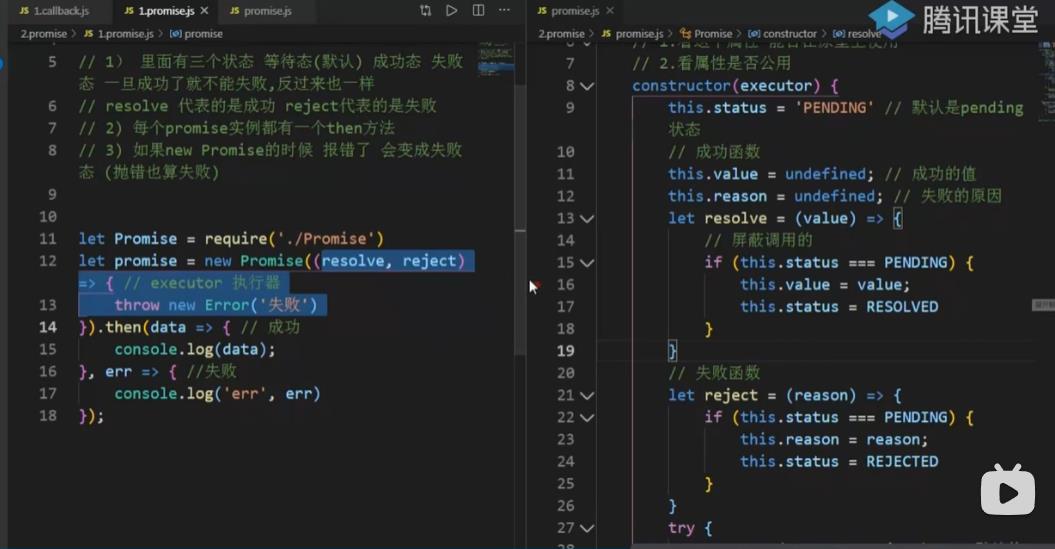
then链
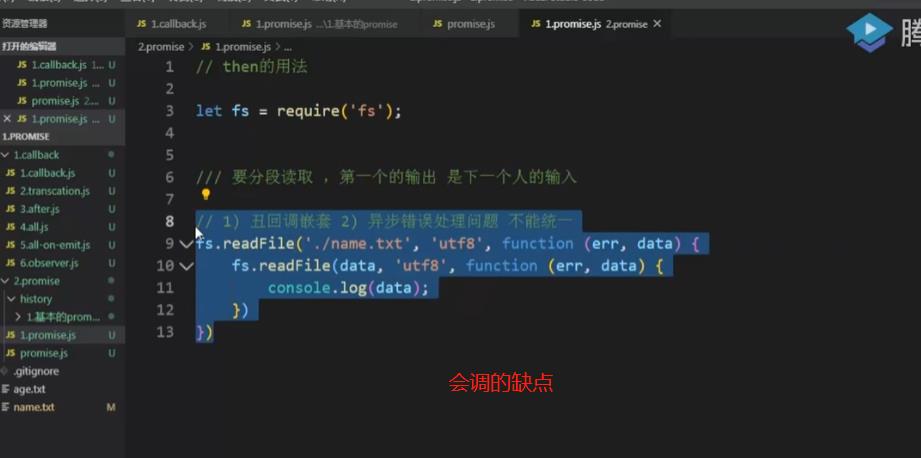
异步代码中的报错是无法被外部try-catch捕获的
代码思路:
首先then需要返回一个新的promise
然后我的执行结果还要传递给下一个then,所以promise2要变为成功态,所以要拿到执行结果x然后resovle
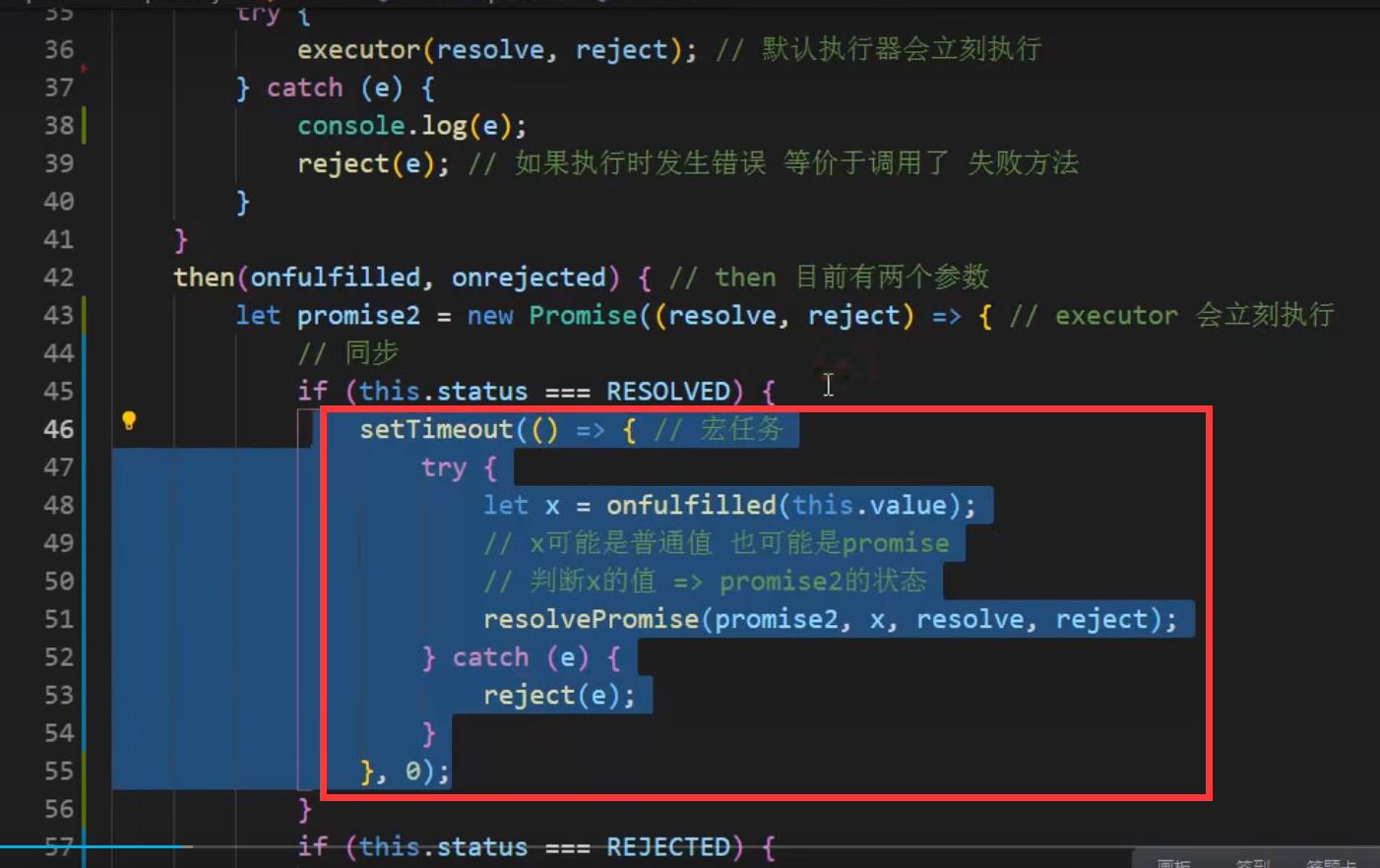
resolvePromise

判断数据类型:
typeof:不能判断具体的引用数据类型和null 数组也是object
constructor: 判断构造函数
instanceof:在原型链上找
toString:万能
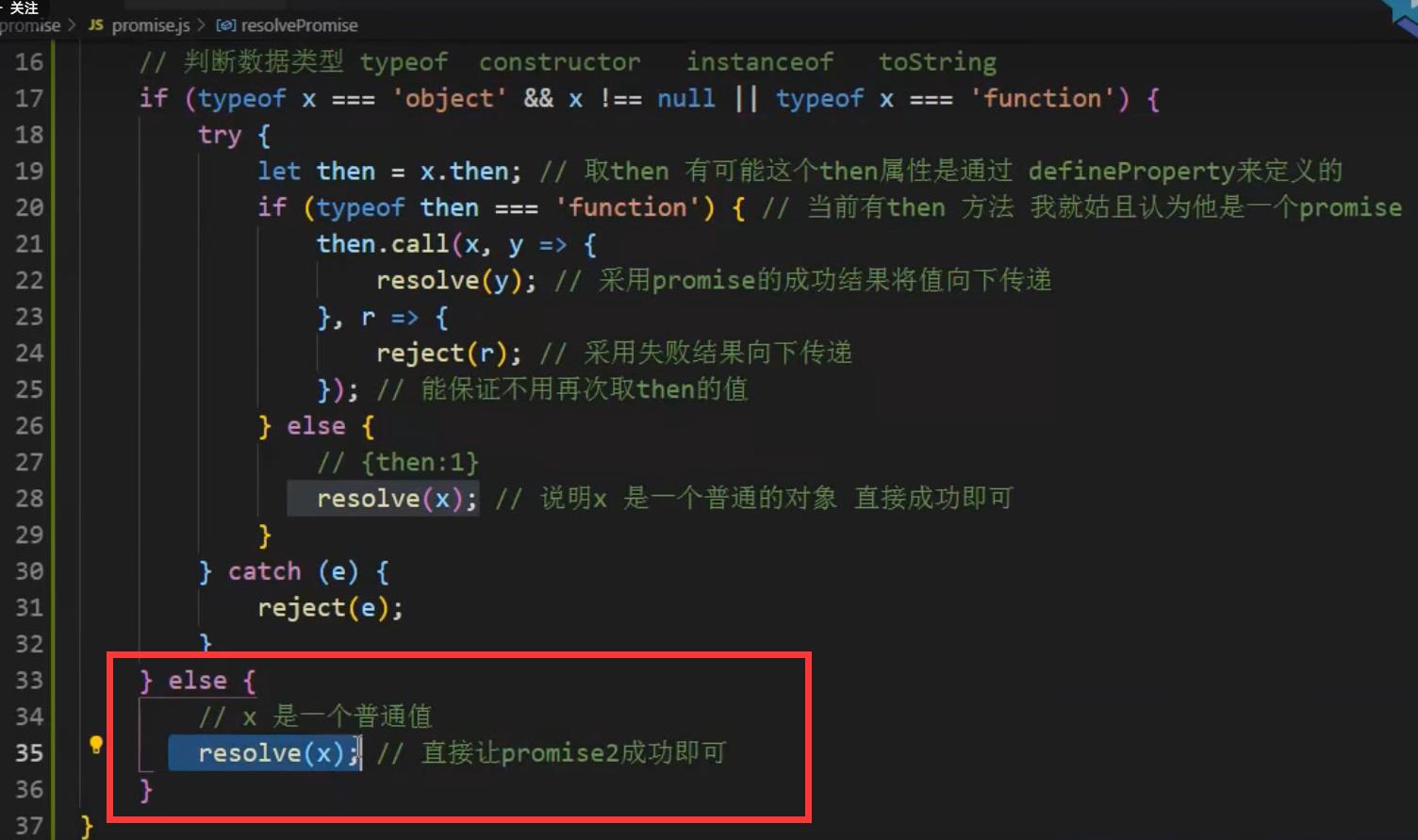
const PENDING='PENDING';
const RESOLVED='RESOLVED';
const REJECTED='REJECTED';
const resolvePromise=function (promise2,x,resolve,reject)
if(promise2===x)
return reject(new TypeError('Chaining cycle detected for promise #<Promise>'))
if(typeof x === 'object' && x!=null || typeof x ==='function')
try
let then=x.then;
if(typeof then ==='function')
then.call(x,y=>
// resolve(y)
// 如果y又是一个promise,那么继续递归
resolvePromise(promise2,y,resolve,reject)
,r=>
reject(r)
)
else
resolve(x)
catch (e)
reject(e)
else
resolve(x)
class Promise
constructor(executor)
this.status=PENDING;
this.value=undefined;
this.reason=undefined;
this.onResovledCallbacks=[]
this.onRejectedCallbacks=[]
let resolve=(value) =>
if(this.status===PENDING)
this.status=RESOLVED;
this.value=value;
// 成功
this.onResovledCallbacks.forEach(fn=>fn())
let reject=(reason) =>
if(this.status===PENDING)
this.status=RESOLVED;
this.reason=reason;
// 失败
this.onResovledCallbacks.forEach(fn=>fn())
try
executor(resolve,reject)
catch (e)
reject(e)
then(onresolved,onrejected)
onresolved=typeof onresolved==='function'?onresolved:(data)=>data;
onrejected=typeof onrejected==='function'?onrejected:(err)=>
throw err;
// 每一个then都返回一个新的promise
let promise2=new Promise((resolve,reject)=>
if(this.status===RESOLVED)
setTimeout(()=>
try
let x=onresolved(this.value)
resolvePromise(promise2,x,resolve,reject)
catch (e)
reject(e)
,0)
if(this.status===REJECTED)
setTimeout(()=>
try
let x=onrejected(this.reason)
resolvePromise(promise2,x,resolve,reject)
catch (e)
reject(e)
,0)
if(this.status===PENDING)
this.onResovledCallbacks.push(()=>
setTimeout(()=>
try
let x=onresolved(this.value)
resolvePromise(promise2,x,resolve,reject)
catch (e)
reject(e)
,0)
)
this.onRejectedCallbacks.push(()=>
setTimeout(()=>
try
let x=onrejected(this.reason)
resolvePromise(promise2,x,resolve,reject)
catch (e)
reject(e)
,0)
)
)
return promise2;
Promise.defer=Promise.deferred=function()
let dfd=
dfd.promise=new Promise((resolve,reject)=>
dfd.resolve=resolve;
dfd.reject=reject;
)
return dfd;
function isPromise(obj)
if(typeof obj ==='object' && obj !=null || typeof obj==='function')
if(obj.then && typeof obj.then ==='function') return true;
return false;
Promise.all=function(values)
return new Promise((resolve,reject)=>
let results=[],times=0;
function processData(index,data)
times++;
results[index]=data;
if(times===values.length)
resolve(results)
for(let i=0;i<values.length;i++)
let current=values[i];
if(isPromise(current))
current.then(res=>processData(i,res))
else
processData(i,values[i])
)
module.exports=Promise;
finally
finally会承接上一个promise的状态,透过finally,传递给下一个then/catch
finally就是then的别名,就是通过then去实现的。如果上一个是成功就把成功往下传,上一个是失败就把失败往下传
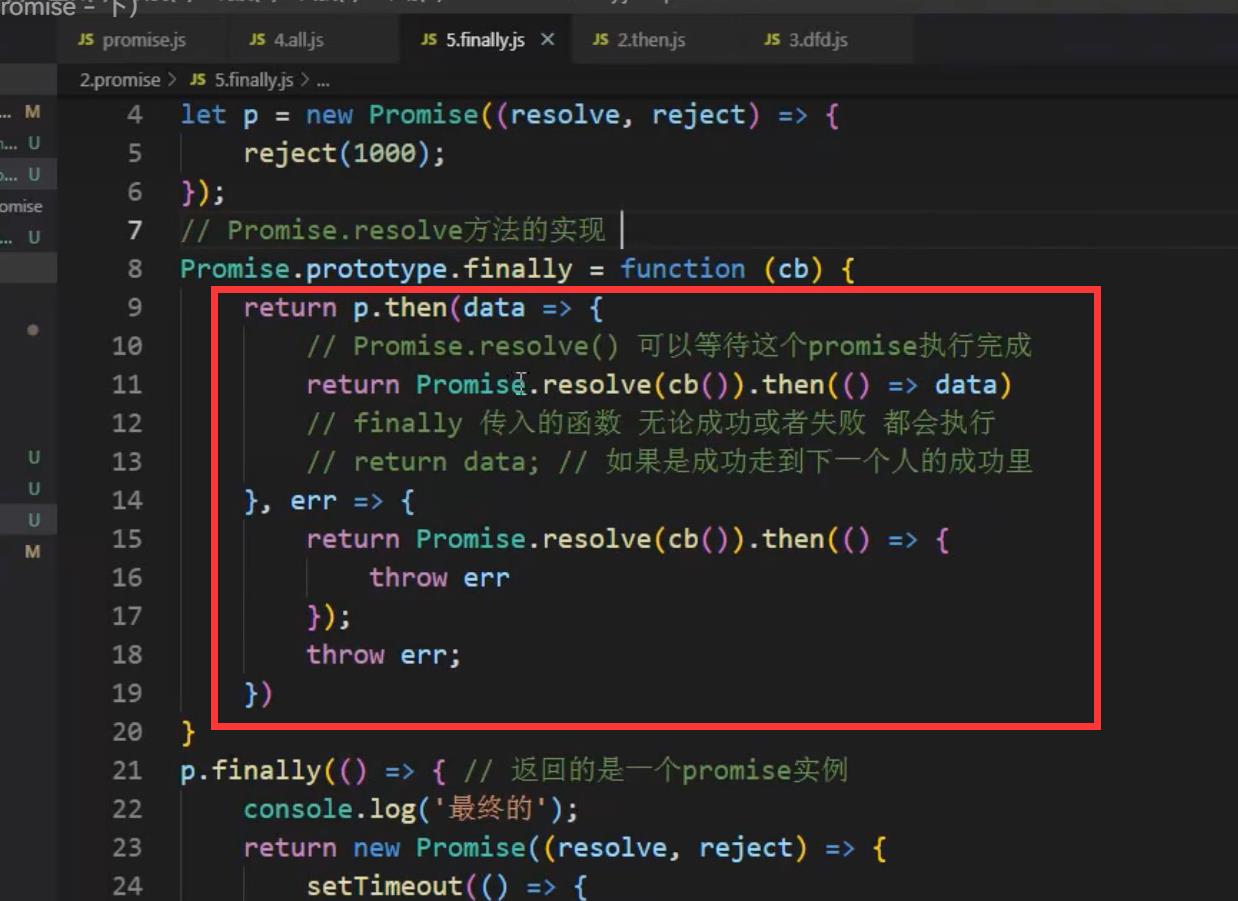
Generator
迭代器,就是一个对象,具有next方法,并且next方法返回value:xxx,done:xxx
生成器就是产出迭代器,就是生成迭代器
let obj=
0:'a',
1:'b',
length:2,
*[Symbol.iterator]()
for(let i=0;i<this.length;i++)
yield this[i]
// let i=0;
// return
// next:()=> // 直接使用箭头函数
// return
// value:this[i],
// done:i++===this.length
//
//
//
let arr=[...obj];
console.log(arr);
generator+co
也就是async/await的原理
const fs=require('fs').promises;
function *read()
try
const content=yield fs.readFile('./name11.txt','utf8');
const age=yield fs.readFile('./age.txt','utf8');
return age;
catch (e)
console.log('err=======',e)
let it=read();
// const value,done=it.next();
// Promise.resolve(value).then(data=>
// console.log('data=======');
// console.log(data)
// const value,done=it.next(data);
// Promise.resolve(value).then(data=>
// console.log('data=======');
// console.log(data)
// const value,done=it.next(data)
// )
// )
// 核心代码
function co(it)
return new Promise((resolve,reject)=>
function deepNext(it,data)
const value,done=it.next(data);
if(!done)
Promise.resolve(value).then(data=>
deepNext(it,data) // 把yield结果传递给下一个it.next
,(err)=>it.throw(err))
else
resolve(data)
deepNext(it)
)
co(it)
小扩展:
其实还是AOP思想

总结

以上是关于如何手写一个promise函数的主要内容,如果未能解决你的问题,请参考以下文章